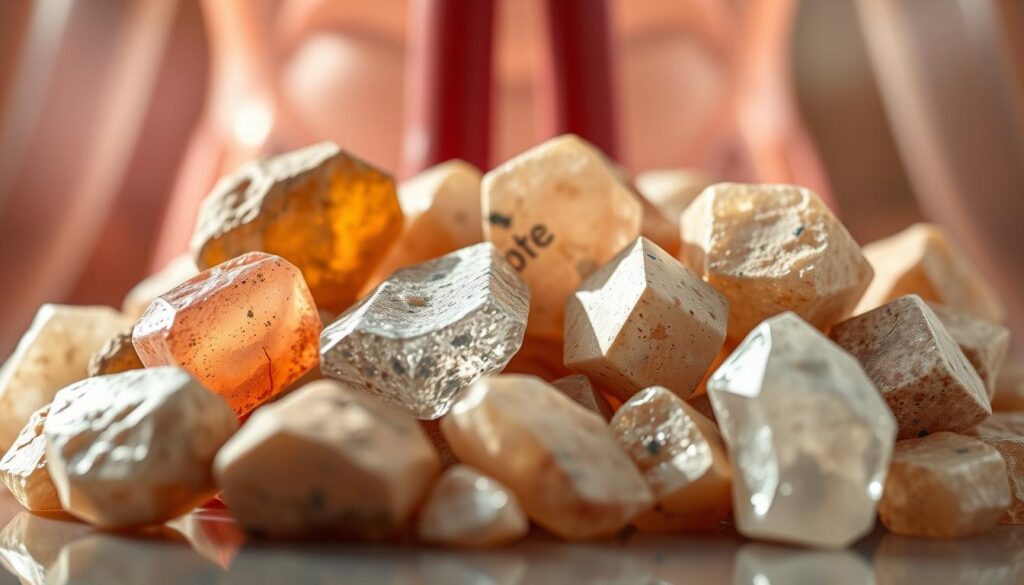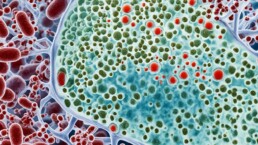Ever looked down and seen your pee is cloudy? It’s not the most pleasant thing. But, changes in your urine can tell you a lot about your health. Dr. Good Deed explains the six main reasons for cloudy pee and how to fix it.
Table of Contents
ToggleIntroduction
The color and clarity of your urine can tell you a lot about your health. Watch for any changes in your urine. Cloudy or milky urine might mean you have a urinary tract infection (UTI). It could also smell bad.
Even small changes in urine color can mean big things. For example, dark brown but clear urine could point to liver problems. Pink, red, or lighter brown urine might be from food, medicine, or kidney injury.
Knowing why your urine changes is key to staying healthy. By watching your urine, you can catch problems early. If you notice something off, see a doctor right away.
Urine Color and Health Indicators
- Dark yellow or orange urine: Can be caused by B complex vitamins, certain medications, or recent laxative use.
- Green or blue urine: May be due to artificial colors in food or medicines, bilirubin, or urinary tract infections.
- Pink, red, or lighter brown urine: Can be caused by various factors including certain foods or medications, hemolytic anemia, or injury to the kidneys or urinary tract.
- Dark brown but clear urine: May signify a liver disorder such as acute viral hepatitis or cirrhosis.
If your urine looks different, talk to a doctor. They can find out why and help you get better.
Dehydration
Dehydration is a common reason for cloudy urine. Not drinking enough fluids makes urine more concentrated. This leads to a cloudy or murky appearance.
Dehydration also makes urine smell stronger. This is because there are more waste products and minerals in it.
It’s key to stay hydrated for good health. Men should drink 125 ounces of water daily. Women should aim for 91 ounces.
Drinking more water can clear up cloudy urine. This is especially true for dehydration.
Dehydration affects people of all ages. But older adults and pregnant women are more at risk. Their bodies need more water.
To fix cloudy urine from dehydration, just drink more water. Staying hydrated prevents smelly and cloudy urine. It also keeps other dehydration-related health issues at bay.
Key Takeaways:
- Dehydration is a common cause of cloudy urine due to the increased concentration of waste products and minerals in the urine.
- Drinking more water can help clear up cloudy urine caused by dehydration.
- Dehydration is prevalent in older adults and pregnant individuals, who may need to increase their fluid intake to maintain optimal hydration.
- Staying hydrated can prevent smelly and cloudy urine, as well as other health issues related to dehydration.

Urinary Tract Infections (UTIs)
Urinary tract infections (UTIs) often cause cloudy urine. Bacteria in the urinary tract lead to inflammation and white blood cells. This makes the urine look cloudy.
Other signs of a UTI include a strong need to pee, burning while peeing, and pain in the lower belly.
Cloudy pee can also mean infections or other issues like kidney stones or diabetes. UTIs can cause pain, frequent need to pee, blood in urine, and belly pain.
Women are more likely to get UTIs than men. People with diabetes are also at risk. Treating UTIs can take several weeks of antibiotics.
Cloudy, smelly urine doesn’t always mean UTI. Too much testing and treatment can lead to antibiotic resistance. This can cause more infections.
If your urine stays cloudy, see a doctor. They can find the cause and treat it. This helps avoid bigger problems.
Kidney Stones
Kidney stones can make your urine look cloudy. These hard mineral deposits irritate the urinary tract. This irritation leads to white blood cells and debris in the urine.
It’s important to know the signs and symptoms of kidney stones. This helps keep your urinary system healthy.
Signs and Symptoms of Kidney Stones
Kidney stones can be small or quite large. Some people don’t notice them, while others feel a lot of pain. The pain can be in the back, abdomen, or groin.
Other signs include:
- Blood in the urine (hematuria)
- Difficulty urinating or increased urinary urgency
- Nausea and vomiting
- Fever and chills (indicating an infection)
The pain from kidney stones can be very intense. It might feel like childbirth pain. If you have these symptoms, see a doctor right away.

Drinking enough water and managing obesity can help prevent kidney stones. Being proactive about your urinary health can prevent these painful deposits. This keeps your urine clear and healthy.
Diabetes
Diabetes can make your urine look cloudy. When your body can’t use or store glucose right, it spills into your urine. This pulls more water into your bladder, making your urine look cloudy and diluted.
People with diabetes might also pee more often. They might notice their urine smells sweet or fruity.
About 30% of those with type 1 diabetes and 10% to 40% of those with type 2 might get kidney failure. Also, 10% to 40% of type 2 diabetes patients could get chronic kidney disease. This can affect how their urine looks and feels.
If you have diabetes, watch your urine closely. Talk to your doctor if you see changes like cloudiness or strange smells. Managing your diabetes well can help keep your urine healthy.
Pee Appears Cloudy
If your pee looks cloudy, you might worry. Cloudy pee can mean many things, from not drinking enough to serious health issues. Knowing why your pee might change is key to staying healthy and catching any big problems early.
Dehydration is a big reason for cloudy pee. Not drinking enough water makes your pee more concentrated. In fact, 75% of Americans don’t drink enough water. Aim for about 70 ounces of water a day to stay hydrated.
Urinary tract infections (UTIs) can also make your pee cloudy. UTIs cause inflammation and white blood cells in your pee. Women are more likely to get UTIs, especially if they’re pregnant or have diabetes.
Kidney stones can also make your pee look cloudy. These stones in your kidneys can make your pee cloudy by building up minerals. Eating foods high in minerals, like nuts and spinach, can raise your risk of getting kidney stones.
If your pee always looks cloudy, see a doctor. Cloudy pee can mean diabetes, infections, or even bladder cancer. Don’t ignore it, as ignoring it could lead to bigger problems.

Understanding why your pee might be cloudy helps keep you healthy. Your pee can tell you a lot about your health. So, watch for changes and talk to your doctor if you notice anything different.
Sexually Transmitted Infections (STIs)
Sexually transmitted infections (STIs) can surprise you with changes in your urine. Chlamydia, gonorrhea, and trichomoniasis can cause inflammation. This leads to pus or discharge in your urine, making it cloudy or turbid.
These STIs can also cause other symptoms. You might feel pain when you pee, notice unusual discharge, or feel itching or burning in your genital area. Knowing these signs is key. Early treatment can prevent serious problems.
Common STIs that Can Cause Cloudy Urine
- Chlamydia: A bacterial infection that can lead to inflammation and the release of pus into the urine.
- Gonorrhea: Another bacterial infection that can cause a similar inflammatory response, resulting in cloudy urine.
- Trichomoniasis: A parasitic infection that can also contribute to cloudy urine and other urinary symptoms.
It’s vital to remember that these STIs might not show obvious symptoms. So, if your urine looks different or you have other urinary issues, see a doctor. Early treatment can stop the spread of these infections and avoid long-term problems.
Medications and Supplements
Some medicines and supplements can change how your urine looks. Antibiotics, antidepressants, and vitamins or herbal remedies can do this. They might make your urine cloudy or change its color.
Metronidazole, an antibiotic, can make urine color. Phenazopyridine, for UTIs, turns urine bright orange. Isoniazid and rifampin, for TB, can make urine yellow-orange or brownish-red.
Other medicines can also make your urine look cloudy or colored. For example:
- Sulfasalazine, an anti-inflammatory, can turn urine, sweat, and tears orange
- Nitrofurantoin, Senna, Phenytoin, Levodopa, Chloroquine/Primaquine, and iron supplements, which can lead to brown urine
- Warfarin, a blood thinner, which can cause pink or red urine
- Amitriptyline, Cimetidine, Indomethacin, and others, which may turn urine blue or green
If your urine changes after starting a new medicine or supplement, talk to your doctor. They can figure out why and check for any health problems.
Dietary Factors
The foods and drinks you eat can change how your urine looks. Some foods, like asparagus, beets, and rhubarb, can make urine look cloudy or different colors. Drinking a lot of alcohol or caffeine can also make urine seem more concentrated and cloudy. Watching what you eat and drink can help you find out what might be causing cloudy urine.
Foods and Beverages That May Contribute to Cloudy Urine
Your diet affects how your urine looks. Here are some foods and drinks that might make your urine cloudy:
- Dairy products, such as milk and cheese, which are high in phosphorus
- Meat, seafood, and poultry, which are rich in purines and can increase uric acid levels
- Sugary foods and drinks, which can lead to excess sugar excretion and cloudy urine
- Salty snacks and processed foods, which can cause dehydration and concentrated urine
- Alcoholic beverages, which can contribute to dehydration and concentrated urine
- Caffeinated drinks, like coffee and energy drinks, which can also lead to dehydration and cloudy urine
By paying attention to your diet and how it affects your urine, you can find out what might be causing cloudy urine. You can then make changes to keep your urine healthy.
When to Seek Medical Attention
Cloudy urine sometimes isn’t a big deal. But, some signs mean you should see a doctor. If you feel pain, burning, or really need to pee a lot, you might have a urinary tract infection. This needs antibiotics.
Severe pain, blood in your pee, or very dark pee are serious signs. They could mean kidney stones or a kidney infection. You should see a doctor right away.
Warning Signs and Symptoms
- Pain, burning, or persistent urge to urinate – could indicate a urinary tract infection
- Severe or persistent pain in the abdomen or back – may be a sign of kidney stones or a kidney infection
- Blood in the urine – could be a symptom of a more serious underlying condition
- Urine that appears very dark, discolored, or cloudy with white specks – may require medical evaluation
If you notice these signs, get medical attention fast. A doctor can check you and give the right treatment. This will help fix your cloudy urine and keep your urinary health good.

Conclusion
Understanding why your urine might be cloudy is key to keeping your urinary health in check. It helps you spot and fix any urinary symptoms. Issues like not drinking enough water or infections can show up in your urine’s color.
Watching for changes in your urine’s color or clarity is important. It helps you catch problems early. If you notice something off, see Dr. Good Deed or your doctor right away.
Your urinary system is crucial for your health. So, it’s important to watch for any issues and deal with them fast. Knowing what causes cloudy urine and acting on it can help you stay healthy and feel great.
FAQ
What are the most common reasons for cloudy urine?
Cloudy urine can be caused by dehydration, UTIs, kidney stones, and diabetes. It can also be due to STIs, or certain meds.
How can dehydration lead to cloudy urine?
Not drinking enough water makes urine more concentrated. This can make it look cloudy or murky.
What are the signs of a urinary tract infection (UTI)?
UTI symptoms include cloudy urine and a strong urge to pee. You might also feel burning while peeing and have lower belly pain.
How can kidney stones contribute to cloudy urine?
Kidney stones can irritate the urinary tract. This leads to white blood cells and debris in the urine, making it cloudy. Symptoms include sharp pain and trouble peeing.
How can diabetes affect the appearance of urine?
Diabetes can make urine cloudy by adding sugar. This draws more water, making it look diluted. People with diabetes might pee more often and notice a sweet smell.
What sexually transmitted infections (STIs) can cause cloudy urine?
STIs like chlamydia and gonorrhea can make urine cloudy. Symptoms include painful peeing, unusual discharge, and genital itching.
Can medications and supplements cause cloudy urine?
Yes, some meds and supplements can make urine cloudy. This includes antibiotics and certain vitamins.
How can diet affect the appearance of urine?
Foods like asparagus and beets can make urine cloudy. Too much alcohol or caffeine can also make it appear cloudy.
When should I seek medical attention for cloudy urine?
See a doctor if cloudy urine hurts or burns. Also, if you have a strong urge to pee or if urine looks very dark. These could be signs of a serious issue like kidney stones.
Source Links
- Troubled Waters: Reading Urine in Medieval Medicine
- Richard Foreman. The Cherokee Physician, or Indian Guide to Health, as Given by Richard Foreman, a Cherokee Doctor; Comprising a Brief View of Anatomy, With General Rules for Preserving Health without the Use of Medicines. The Diseases of the U. States, with Their Symptoms, Causes, and Means of
- Chapter 57 – MN Laws
- Urine – abnormal color: MedlinePlus Medical Encyclopedia
- Urinary tract infection (UTI) – Symptoms and causes
- Why Is Your Urine Cloudy?
- 6 Reasons For Cloudy Urine – Alliance Urology
- Cloudy urine: 8 causes and treatments

This article is medically reviewed by Dr. Chandril Chugh, Board-Certified Neurologist, providing expert insights and reliable health information.
Dr. Chandril Chugh is a U.S.-trained neurologist with over a decade of experience. Known for his compassionate care, he specializes in treating neurological conditions such as migraines, epilepsy, and Parkinson’s disease. Dr. Chugh is highly regarded for his patient-centered approach and dedication to providing personalized care.








